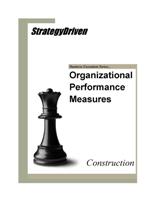Decision-Making – Evaluating Decision Options, part 1 of 3
Decision-making often involves trade-offs. Risk aversion suggests that all things being equal, decision-makers will select the option having the lowest risk. But because all things are never quite equal, decision-makers concede items they deem to be of lesser value to items they believe hold greater value with risk being one of the commodities considered.
Hi there! Gain access to this article with a StrategyDriven Insights Library – Total Access subscription or buy access to the article itself.
| Subscribe to the StrategyDriven Insights Library
Sign-up now for your StrategyDriven Insights Library – Total Access subscription for as low as $15 / month (paid annually). Not sure? Click here to learn more. |
Buy the Article
Don’t need a subscription? Buy access to Decision-Making – Evaluating Decision Options, part 1 of 3 for just $2! |
About the Author


 Organizational accountability exists when all members of the workforce individually and collectively act to consequentially promote the timely accomplishment of the organization’s mission.
Organizational accountability exists when all members of the workforce individually and collectively act to consequentially promote the timely accomplishment of the organization’s mission.